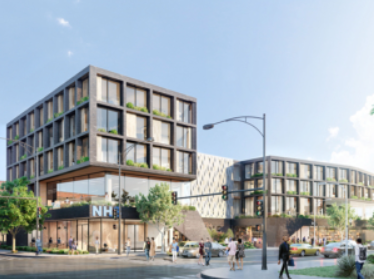
A windfall of federal funding will literally change the landscape throughout America over the next several years.
The recently passed $1 trillion infrastructure bill makes funding available for all kinds of large capital projects. Additional funding is available through the American Rescue Plan Act (ARPA), and many parts of the country still have Coronavirus Aid, Relief, Relief, and Economic Security (CARES) funding to spend.
These bills have received an abundance of media attention, but other federal funding programs also have funding available for various community development projects. These programs should not be overlooked.
One funding source of high interest is the New Markets Tax Credit (NMTC) program. This federal program supports and funds collaborative initiatives in local communities. Historically, funded projects have been primarily in lower-income regions of the country, but the program criteria are flexible.
 The NMTC program is designed to support projects that benefit citizens or improve economic conditions. Projects that are related to health-care services, public safety, education enhancement, or citizen services are favored. The funding supports projects that help revitalize rural communities, schools, hospitals, and community facilities. Objectives include economic vitality, the creation of jobs, or other critical needs.
The NMTC program is designed to support projects that benefit citizens or improve economic conditions. Projects that are related to health-care services, public safety, education enhancement, or citizen services are favored. The funding supports projects that help revitalize rural communities, schools, hospitals, and community facilities. Objectives include economic vitality, the creation of jobs, or other critical needs.
This program seeks to attract private capital by enabling investors to take advantage of attractive tax credits in exchange for equity investments in public projects. The U.S. Treasury oversees the NMTC program, and although it is a generous program … it is a bit complicated. To simplify it significantly, here is how it works.
A community development entity (CDE) must be created and approved. That is not difficult. The CDE designation can be given to a nonprofit, a bank, or other eligible organizations. Public officials then select a project and collaborate with a CDE to apply for funding approval for qualified projects. The CDE is responsible for oversight of the funding. The federal program will provide a small investment in the project and then allocate tax benefits to private-sector investors who provide the rest of the project funding. The tax credits that are provided to investors are quite beneficial over several years.
Communities interested in this type of collaborative initiative to finance projects will need more detailed information, but the program has a history of successfully encouraging financial investors to invest in community projects. It should not be overlooked as an alternative source of funding.
To date, the NMTC program has issued billions in tax credits and is responsible for financing a wave of construction that has resulted in the addition of hospitals, schools, manufacturing facilities, and other projects in communities where resources are comparatively sparse.
Notable examples of this program’s success are evident in Memphis, Tennessee, where NMTC programming has funded several significant projects. The allure of NMTC financing has incentivized the complete funding of a large charter school, a 22,500-square-foot dance studio, and an even larger YMCA. It is also providing capital for the Memphis-based Loving Arms Home Care Agency to explore plans for expanding its facility and services.
The program also is benefitting parts of Kentucky. A Lexington-based organization, Community Ventures, qualified as a CDE and was awarded $1.8 million to fund localized work projects. A small portion of the capital came from the NMTC program, and private-sector investors financed the rest. The result was an initiative to contract maintenance and repair work for housing and care facilities for women and minorities in economically disadvantaged communities.
In Nebraska, the city of Lincoln is using $10 million in local CDE funding to incentivize private investment in the state’s first affordable housing project in 10 years. The Lincoln CDE will invite investment and partnerships for construction or refurbishment of 500 individual-unit homes in Lincoln over several years.
Although this program is new to some states, many others are employing it on a wide scale. In Illinois, the state’s INVEST South/West program has been able to incentivize $575 million from private and philanthropic sources. The mayor of Chicago recently approved community development projects amounting to $1 billion. Affordable housing has benefitted, and the city of Chicago has purchased a vacant 6-acre lot in the community of Pilsen for $12 million with plans to build 280 affordable housing units.
In New York, state officials have designed a similar initiative to distribute grants under a statewide Predevelopment Program. As with NMTCs, state funding is now available for assistance for low-to-moderate income households, and the state will finance projects for installation of equipment to generate solar power in selected neighborhoods.
Leaders in Colorado also are awarding grant funding through a state program similar to the NMTC program. Colorado’s Community Revitalization Grants Program focuses on needs in creative districts, historic districts, main streets, and local commercial centers. More precisely, the funding applies to projects that combine the workforce from various creative industries with projects for housing, commercial spaces, performance spaces, community gathering spaces, child care centers, and retail partnerships.
Tax credit programs that are currently available have funding authorized through at least 2025. Public officials have numerous options to fund community projects. Job creation, economic boosts, and collaborative initiatives will increase significantly in the next several years.
